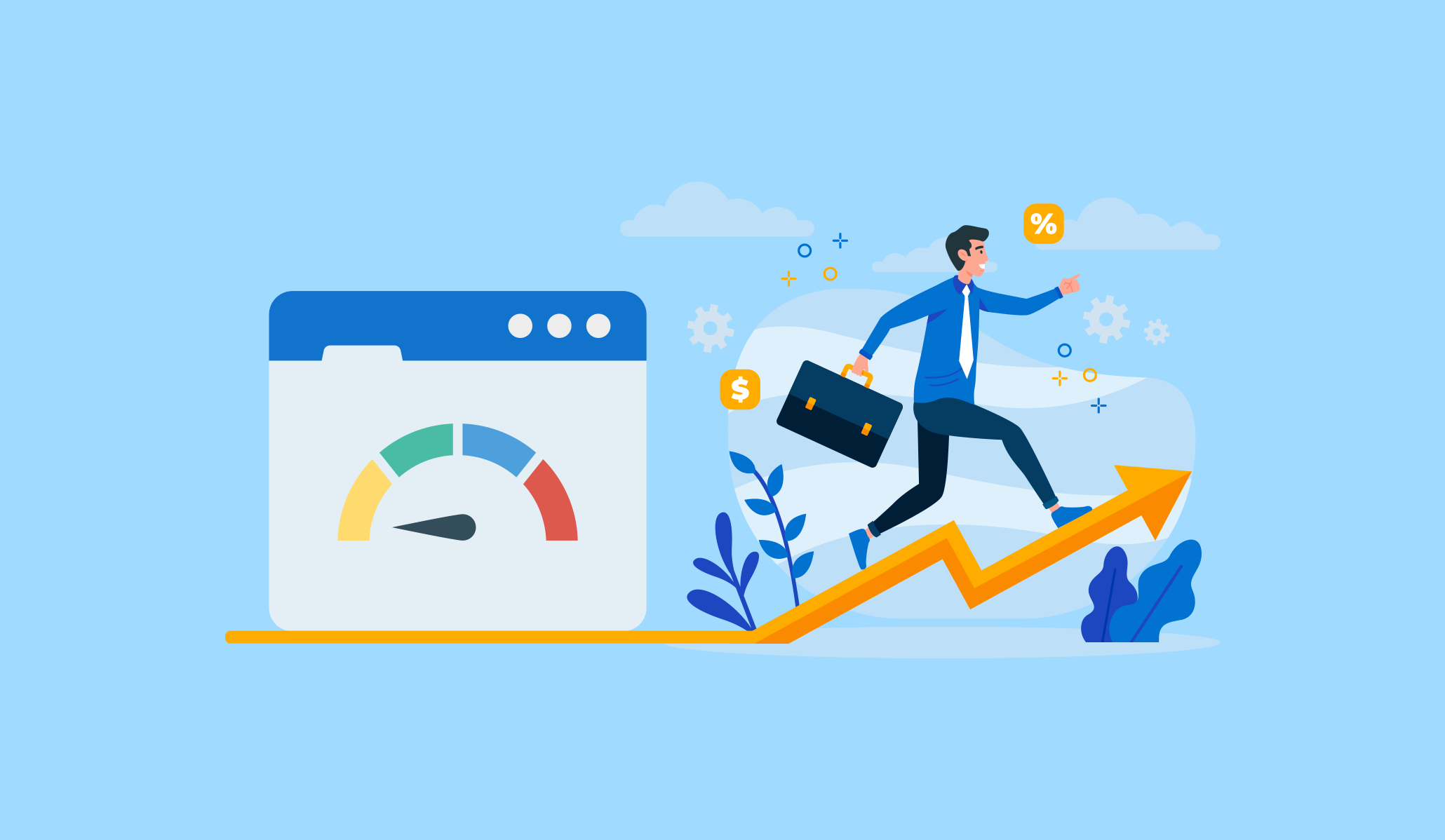Supercharge Your Website: Unleashing the Power of Web Performance Hacks
 Ganesh J
Ganesh JTable of contents

In this modern age of instant gratification and short attention spans, people expect websites to load quickly and provide a seamless browsing experience. The need for speed is not just a matter of convenience; it can make or break a website's success.
Imagine this: you stumble upon a website that takes forever to load. Frustration sets in as you watch the progress bar crawl at a snail's pace. You start losing interest, perhaps even contemplating abandoning the site altogether. As a web developer, this scenario is your worst nightmare because, with each passing second, you're losing potential customers and revenue.
But fear not! There are web performance hacks that can help you improve the speed of your website and keep visitors engaged. Let's dive into the world of web optimization and explore the key parameters that play a vital role in enhancing website performance.
One crucial metric to consider is the Largest Contentful Paint (LCP). It measures the time it takes for the largest component of your webpage to load when someone opens your site. Ideally, you want this to happen within 2.5 seconds. As your website loads, it retrieves various assets, such as images and videos, from the internet and renders them for your visitors to see.
The First Contentful Paint (FCP) is the initial stage of the loading process. It primarily includes basic HTML tags and textual content, giving users a glimpse of what's to come. Subsequently, the remaining elements, such as images, gradually appear. Why is LCP so important, you may ask? Well, it's closely tied to SEO. A good LCP score can positively impact your website's ranking on search engines like Google.
To assess and optimize your website's performance, you can leverage powerful tools like Chrome DevTools. Simply right-click on your browser (preferably Chrome), select 'Inspect,' and navigate to the 'Network' tab. There, you'll find a valuable feature called the 'Network Waterfall.' It provides a visual representation of the assets being loaded and their respective timing. This tool offers valuable insights into the total time taken to load all the assets on the first visit to your website.
Now, let's uncover some performance optimizations that can boost your LCP score:
Reduce Resource Load Time: Compress media files, such as images, and convert them into web-optimized formats like 'avif' and 'webp'. This reduces their file sizes and allows browsers to render them more quickly. Additionally, consider optimizing videos to ensure efficient loading.
Embrace Content Delivery Networks (CDNs): A CDN is a network of servers spread across various locations. By deploying your assets, such as images and scripts, to a CDN, you ensure they are delivered from the server closest to your users. This reduces latency and speeds up the loading process.
Tackle Render Blocking JavaScript: JavaScript plays a vital role in making websites interactive. However, when JavaScript is rendered before essential assets, it can significantly delay the LCP. To avoid this, consider using frameworks like 'Next.js,' which leverage Server-Side Rendering (SSR) techniques to optimize the loading order.
Harness the Power of Preloading: You can prioritize the loading of certain assets by utilizing the 'preload' feature. By adding a 'fetchPriority' attribute in JavaScript, you can ensure that critical resources are loaded first, improving the overall LCP score. Keep in mind that this feature is still experimental, so exercise caution.
While LCP is crucial, it's not the only performance metric to consider. Another essential parameter is the First Input Delay (FID), which measures the interactivity of your website. In other words, FID determines how quickly users can interact with your website. Ideally, you want the First Input Delay to be below 100 milliseconds to provide a smooth and responsive user experience. After all, no one wants to wait for ages just to click a button or fill out a form.
So, how can you optimize the First Input Delay and make your website more interactive? One effective technique is to reduce the execution time of JavaScript files. JavaScript is a powerful language that enables dynamic functionality on websites, but it can also introduce delays if not optimized properly.
Consider utilizing third-party libraries like PartyTown or lazy-loading techniques provided by frameworks like React. These methods allow you to optimize the execution of JavaScript, ensuring that it doesn't hinder the interactivity of your website. Another option is to explore frameworks like 'Qwik' that prioritize quick and aggressive lazy-loading, making your website highly responsive.
Now, let's address one final parameter: Cumulative Layout Shift (CLS). CLS measures the visual stability of your website and ensures that elements don't unexpectedly shift or jump around while the page is loading. You've probably experienced the frustration of trying to click a button, only to have it move at the last moment. By reducing CLS, you provide a more seamless and user-friendly browsing experience.
To minimize CLS, you can adopt a few best practices. Give your images the proper width and height attributes or use CSS aspect ratios to reserve the necessary space in advance. Additionally, optimize your images using the 'srcset' attribute, which allows different versions of an image to be loaded based on the user's screen size. Lastly, avoid injecting ads into your website, as they can significantly impact CLS and disrupt the stability of your page.
Now that we've covered these essential web performance parameters, it's time to put your knowledge into action. But how do you analyze your website and ensure that these optimizations are working? Fear not, for there are powerful tools at your disposal.
One such tool is 'Google Lighthouse,' which provides insights into various performance metrics. It analyzes your website and generates a comprehensive report, including scores for LCP, FID, CLS, and more. Additionally, 'PageSpeed Insights' offers similar functionality, helping you identify areas for improvement.
But what if you have a large website with numerous pages and elements? Analyzing each page individually can be a daunting task. That's where a fantastic tool called 'Unlighthouse' comes in. Unlighthouse is an open-source tool that runs Google's Lighthouse on every single page of your website. It saves you time and effort by providing an overall score for your entire website. Aim for a score above 93 to ensure not only a great SEO ranking but also high user retention.
Armed with these insights and tools, you're well-equipped to embark on your web optimization journey. Remember, the speed and performance of your website can make a world of difference in today's fast-paced digital landscape. By implementing these web performance hacks and continually monitoring and refining your site, you'll create a delightful experience for your users and pave the way for online success.
May your website soar to new heights of speed and efficiency. Happy optimizing!
Subscribe to my newsletter
Read articles from Ganesh J directly inside your inbox. Subscribe to the newsletter, and don't miss out.
Written by
